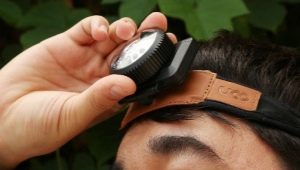Camping equipment: equipment, clothing and other inventory
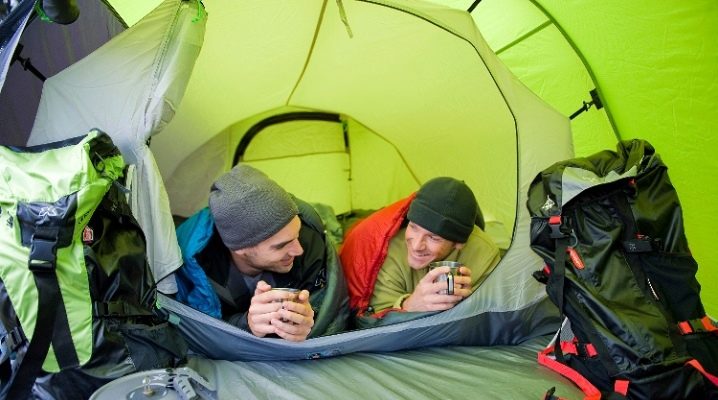
Preparing for a hike is a fun activity. The anticipation of new experiences, acquaintance with uncharted places, the opportunity to be alone with nature - all this pleases and gives a charge of vivacity long before the trip itself. However, so that your trip does not bring disappointments and unpleasant surprises, you must first take care of the right hiking equipment.
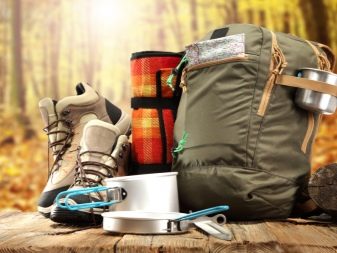

What it is?
Camping equipment is the equipment necessary for the trip and the appropriate clothing and footwear. By paying due attention to this stage, you will save yourself from unexpected troubles on the route. Whatever the purpose of the hike - camping, mushrooming or extreme hiking in the mountains - each of them requires a careful choice of equipment. Let's take a closer look at what you should take with you on a trip.
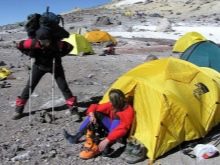


Classification
It is conditionally possible to divide tourist equipment into equipment, vehicles, bivouac equipment, special and auxiliary equipment.
Equipment
The most important moment in the preparation of equipment is the choice of clothing. There must be at least two sets of clothes. Spare kit must be kept in waterproof packaging.
Shoes should be comfortable, if possible waterproof or quick-drying, always with a good tread.In summer it can be sports sandals. For winter hiking, special membrane-based boots are produced - breathable, but at the same time resistant to snow and water. Before going on a hike, shoes should be worn for a while to make sure that they do not rub the foot. In parking lots, light slippers will be useful.
It is better to choose clothes not from cotton, but from light synthetics. - modern materials allow the skin to breathe, and the weight of such clothes is less than from natural fibers - cotton, linen and wool. Fleece clothing is indispensable in field conditions - it keeps heat well, dries quickly and weighs little. Clothing should be slightly loose, not impede movement. Pants - sports, in the heat - shorts.


It is advisable to choose waterproof outerwear. If possible, purchase a jacket made of membrane fabric or take a pair of raincoats - one in reserve, since polyethylene raincoats are not durable. Their advantage is that they take up little space and are almost weightless.
In case of cold nights, you will also need a hat, gloves, warm socks. In sunny weather, a headdress is required - a cap, a panama hat, a scarf. If you have to hike in the southern area, then headdress should be with brimto protect from burning also the neck and shoulders - the most vulnerable places.
Be guided by the number of linen changes individually - if there is a possibility of daily washing, you can get by with two shifts - shorts, socks, a T-shirt.

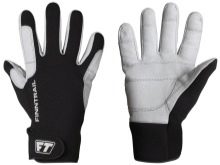

In addition to clothing, you will need the following supplies.
- Documents and money in waterproof packaging.
- First Aid Kit: gauze bandage, elastic bandage, antiseptic (for example, hydrogen peroxide), activated carbon in case of poisoning, a remedy for dyspepsia will also not be superfluous. And, of course, your usual medications, if you're taking them.
- Tableware - plastic or metal bowl, spoon and mug. A fork in a hike is an overkill, in addition, sharp cloves can damage nearby objects. Metal utensils are more durable, but hot drinks and soup are more comfortable to drink from plastic utensils.
- Toothpaste, brush, soap (more convenient liquid), toilet paper, wet wipes.
- Torch (preferably headband).
- Towel - small and not bulky. It should dry quickly and take up little space.
- Water bottle, preferably two - drinking and for technical needs. Sometimes you need to stock up. A volume of 1.5 liters is usually sufficient.
- Mobile phone and other necessary equipment and accessories - Preferably sealed.



On a hike very It is important to choose the right backpack. The volume of a tourist backpack usually ranges from 40 to 80 liters.
Pay attention to the part adjacent to the back - it should be as comfortable as possible and evenly distribute the load on the spine.

Means of transport
Depending on the complexity of the hike, tourists can travel by bike, car, boat (kayak, boat, yacht) or on foot.
Traveling by car is the most comfortable way, especially for passengers. However, you are limited by highways and the availability of gas stations.
A bicycle is a great alternative to a car. You do not depend on the amount of gasoline, and any narrow paths are available to you. At the same time, you can cover a long distance, which will take many times more time and effort on a hike.


Hikes are often organized, the participants of which ride bicycles, and all the equipment is carried by a car. This is a convenient form that allows you to take not only the most necessary things, but also some additional things. However, if you are traveling by bike on your own, you should have with you the necessary set of tools to eliminate a sudden breakdown, as well as a spare camera.
A water trip gives you the opportunity to see nature from an unexpected perspective. For children and completely unprepared participants, this is a good opportunity to participate in the trip as passengers. Participants of water trips need to remember about the mandatory presence of life jackets.
Hiking requires some preparation and good footwear. However, you can start with simple one-day hikes and gradually accumulate the necessary experience.
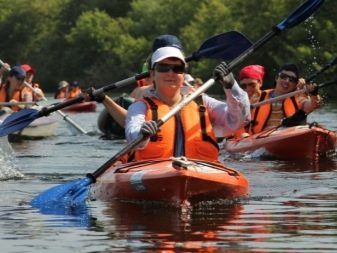

bivouac equipment
The mandatory list of personal travel equipment includes sleeping bag, the choice of which should be approached especially responsibly. It is desirable that the comfort temperature indicated on the sleeping bag be several degrees higher than the lowest expected air temperature during the trip.
The weight of the sleeping bag should not exceed 15% of the total weight of the assembled backpack.
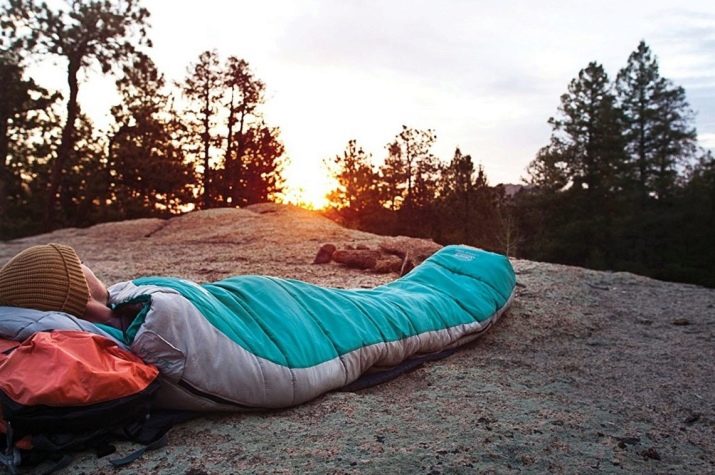
Choosing a tent is no less crucial moment. A good tourist tent must be double-layered - it provides reliable protection from rain, and also keeps things dry by collecting condensate between layers. The weight of an ordinary tent, depending on the number of places, ranges from 1.2 to 4.8 kg - 1.2 kg of weight per person.
travel mat (otherwise it is called "foam" or "karemat") - this is a camping mattress. Rugs come in different sizes and thicknesses. On a thick one it is more comfortable to sleep, but it takes up more space.You will also need a small mat for sitting, a very handy thing in the campaign, allows you to sit comfortably on any surface.


Camping group equipment includes utensils and cooking tools.
- Bowler hat. If weight allows, it is better to take two - for boiling water and food.
- gas stove. In recent years, such tiles have become widespread, their main advantage is their compactness and light weight. But if a long trip is planned, the gas supply may not be enough. In this case, it is necessary to provide equipment for lighting a fire.
- Axe, matches, lighters.
- Scoop for laying out food (not necessary if there are few participants in the hike - you can get by with a spoon), a cutting board, dishwashing detergent and a sponge.

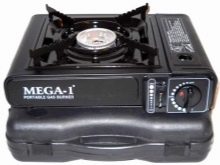

Special
- If you are going to hike in the mountains, you will need trekking equipment - boots and sticks.
- A helmet is required for cycling and gloves are highly desirable. Also, for comfort on a long bike trip, you may need a special seat.
- On a boat trip, each participant needs a life jacket.


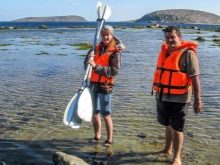
Auxiliary
In difficult hikes, equipment repair is sometimes required. For such cases, it is recommended to take a repair kit with you, including:
- a needle;
- threads;
- awl;
- scotch;
- patch;
- scissors;
- tweezers;
- rope;
- spare batteries for the flashlight.
In winter hiking, it is advisable to take a shovel.


Review of the best brands
Izhevsk-made tourist rugs are one of the most popular models of Russian manufacturers. From well-known brands enjoys success Therm-A-Rest.
The backpack should be quite roomy and at the same time compact. These requirements are well met Red Fox Voyager 55. The backpack of this brand is suitable for any kind of tourism.suspended active system provides comfort when traveling even with a heavy load. Many small compartments, even the waist belt has pockets.


Brand sleeping bag Freetime Condor 250 XL provides a comfortable sleep even at zero and minus temperatures. And the extreme temperature is about -7 degrees.
As for tents, here the choice depends on the number of participants. A double usually comfortably accommodates three people. For example, in a tent Freetime Fidji 2.


Where to buy - in online stores or on trading floors - the choice is yours. Now both professional tourist equipment and budget equipment for beginners are very widely represented. In shops "Trial-sport", for example, you can buy German shoes brand Lowa, as well as clothing, footwear and travel equipment firms Mammut and Millet (Switzerland, France), trekking poles Leki.
Firm Karrimor has a good reputation in the market of tourist backpacks, as well as goods for cooking in field conditions. Brand GoSystem offers portable gas stoves and cookware.


French firm Quechua It is known for a wide range of almost all the goods necessary for a tourist at affordable prices. The range is presented in stores Decathlon. Tents are especially good for any type of recreation - from single hikes to long camping sites.
One of the best brands of domestic clothing for tourism is considered Sivera. The range of this manufacturer includes down jackets and thermal underwear, windbreakers and summer clothes, as well as backpacks and tents.


How to choose?
Camping equipment is selected taking into account the duration of the trip and its specifics.For mountain tourism, light-moving equipment is preferable, and for weekend hikes, it is not necessary to provide property for long-term parking. Equipment for hunters and fishermen additionally includes weapons, decoys, and high waterproof boots.
Mosquito nets are needed in the taiga - both for tents and individual. You should also consider the consequences of mosquito bites and take additional medications with you.
An important criterion for choosing a tent is the weight. If you are going camping in the amount of 2-3 people, then the desired weight of the tent is no more than 3.5 kg, ideally 2.5 kg. Such tents are suitable for hiking, for a one-day trip. However, camping holidays require more comfortable conditions, so tents with a high vestibule are chosen. But the weight also increases accordingly.
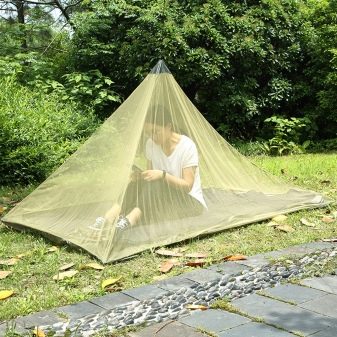
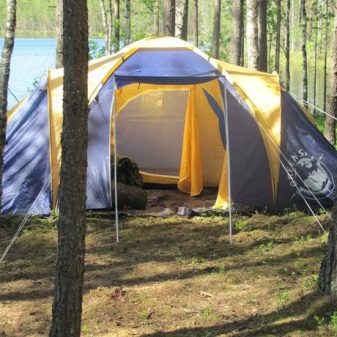
It is also important to pay attention to the temperature regime of the tent. For example, for tourism in the cold season, the comfortable temperature is -5 (-10), extreme -15 (-20) degrees.
The sleeping bag is selected depending on the time of year and weather conditions, but it is better to take warmer. The sleeping bag is packed in any waterproof bag, otherwise moisture will be absorbed into it. This advice is especially relevant for a water trip or a hike in the forest.
The main criteria for choosing a backpack for a hiking trip are as follows:
- volume of 50-60 liters, comparable to the volume of things;
- suspension system - reliable and comfortable, supporting the back;
- external pockets for items that should always be at hand (water bottle, phone);
- the material of the backpack must be durable, a rain cape is desirable for the backpack.


Hiking shoes are selected so that you can use an additional insole or sock, that is, a size or two larger. Make sure you have a well-cushioned sole and a sufficiently waterproof material. In this sense, membrane shoes have proven themselves well. For hikes longer than 1-2 days, spare shoes are required. Instead of high lace-up boots, you can take sneakers or sneakers.

Below is a list of equipment for a solo hike. It includes:
- tent;
- tourist rug;
- sleeping bag;
- a backpack with a volume of about 50 liters;
- knife;
- headlight;
- ordinary lantern;
- matches in sealed packaging, lighters (several pieces), dry fuel in tablets;
- food supply - cereals, dried (dried) meat, dried fruits, energy bars, condensed milk in a tube;
- water supply - 1.5 liters at the rate of replenishment at least once a day;
- first aid kit - bandage, plaster, external antiseptic, anesthetic, antipyretic, elastic bandage, tourniquet, activated charcoal or other absorbent;
- if possible, a gas burner with cylinders;
- dishes - a bowler hat, a bowl, a spoon, a mug;
- small hatchet;
- change of linen, warm socks, hat, gloves;
- compass, rope, hook, needle and thread;
- rocket launcher.

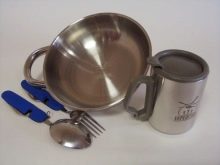

What should not be taken?
Many things that are necessary in everyday life will not be useful on a hike. Taken with you out of habit, they will make the backpack heavier. The list of property that is useless in field conditions usually includes decorative cosmetics, books, a laptop, a kettle, extra utensils and clothes.
Such a necessary item in everyday life as a pillow, in field conditions, is replaced by a set of clothes placed under the head or just a backpack. You should not take extra towels, as well as pack things in boxes - they will take up more space, and protruding corners can cause serious inconvenience on the way.
Therefore, carefully review the list of things and evaluate how much you will need this or that.


For information on what equipment to take with you on a hike, see the following video.






















